Casablanca as star vehicle
Humphry Boggart (Rick Blaine)

Boggart was already a star before his performance in Casablanca as he had frequent roles in gangster films, such as “Dead end” and “The petrified Forrest” before this he had been in Broadway shows. I think he was cast as he was already known to be a good actor.
Ingrid Bergman (Ilsa Lund)

Bergman had previously acted in films in Sweden, she was known for her good looks, kindness and European accent. She became a star overnight after peforming in her first film in English, a remake of “Intermezzo” a film she had previously stared in Sweden. I believe she was cast due to her good looks and star-status.
Paul Henreid (Victor Laszlo)

Developed a passion for acting while still in school, and began acting in Vienna. He was in films and plays across London and Vienna such as “The madman of Europe”. He was a prominent anti-Nazi causing his assets to be seized. He left to USA with his wife and acted in a few plays before acting his most well known films, “Casablanca” and “Now Voyager”. I think he was casted as Lazlo because of his passion and political stance.
Claude Rains (Captain Renault)

Rains began acting on stage in London and due to his expressive face and clear voice he was cast in “The invisible man”. He played a number of both leading and supporting roles in many genres before being in “Casablanca”.
Conrad Veidt (Major Strasser)

He appeared in many British films such as “The thief of Bagdad” before immigrating to the United States where he was recognised for his talent and therefore casted in “Casablanca” which was the last film to be realised in his lifetime.
Sydney Greenstreet ( Signore Ferrari)

Greenstreet did not appear in films until the age of 61 after previously performing on stage. He began working for warner bros in 1941 in “The maltease falcon” which also featured Humphry Boggart who a year after would peform alongside again in “Casablanca”. He acted all through having diabetes and a kidney disease.
Peter Lorre (Ugarte)

Lorre eventually settles in Hollywood and was featured in many Warner Bros crime films, such as “Mad Love” and “The maltease falcon” He was very close friends with Boggart and they later acted together in “Casablanca”
S. Z. Sakall (Carl)

He began a career in films debuting in “Its a date” and “Ball of fire” leading him to be noticed by Warner Bros, where he turned down his role in “Casablanca” three weeks after filming had begun as he “hated it”. He eventually accepted the role.
Madeleine Lebeau (Yvonne)

Lebeau made her Hollywood debut a year before “Casablancas” realise, she was cast in “Hold back the dawn” where Warner Bros gave her a contract to feature in many films including “Casablanca”
Dooley Wilson (Sam)

His role in “Casablanca” was his most well-known peformance but he also previously was a musician touring London and Paris as he was the leader of a band.
Joy Page (Annia Brandel)

“Casablanca” was Page’s debut film, she originally thought the script was old-fashioned and cliché and she got the role on her own, with Warner Bros reluctant approval. Yet she did not land a contract and didn’t appear in another Warner Bros film.
John Qualen (Berger)

Qualen reached Broadway in 1929 before his film debut began as a screen adaptation to a play he had previously performed on stage. He became a star and appeared in over 100 films over his career including “Casablanca”
General notes:
The film was not expected to become so beloved and a “classic” it was by luck
Casablanca is a clear representation on “factory-like” filmmaking and is considered one of the best 1940s, WWII films.
The script was made up and written on a daily basis, the ending was not written until the last day of filming and the story was not well known.
Humphry Boggart (Rick) was unexperienced in this kind of role as he had only previously played in gangster films, and he was often in a bad mood on set due to the lack of preparation.
Curtiz was a Hungarian refugee, and the extras who played fellow refugees on set were real.
Mise en Scene in Casablanca
Locations: The location shots in Casablanca are incredible, as despite being shot in Hollywood, the Moroccan city of Casablanca is well portrayed and audiences are unable to tell that it wasn’t filmed there. For example, the main street is shown as a dessert due to the dry, hot climate adding to the story by reflecting the characters who stay in Casablancas feeling desperate.
- Women in the film were dressed in clothing to allow them to be perceived as innocent such as dresses and skirts.
- Extras of the film were all WW2 refugees
- Lighting and shadows add emotional intensity and portray key themes in the film
- Sets had high levels of verisimilitude, such as Ricks giving an accurate representation of and American nightclub at the time
Editing in Casablanca
- The film is fast paced allowing it to feel shorter than it is
- The editing style allows for small actions to be noticed such as the glances between Rick and the roulette man as he lets another man win, giving audiences a deeper insight to the personality traits of the characters
- The tones are well blended through the editing to make the film have high continuity
Sound in Casablanca
Diagetic sound if very prominent in Casablanca through the high amount of dialogue and the music played at Rick’s, the music played by the character Sam creates an easy-going social atmosphere whereas a large amount of dialogue has very serious undertones.
Aesthetics in Casablanca
The film combines multiple aesthetics such as film noir and melodrama to make its unique aesthetic that creates a feeling of love and longing through the foggy runway and dim lighting effects created by both high and low key lighting. The aesthetics create an exotic environment.
Representation in Casablanca
Women:
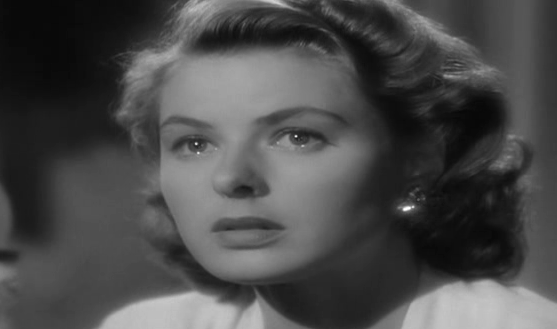
In Casablanca, women were represented to rely and follow their husbands and are seen to be less important compared to them. The film is very male dominated as it was set during WW2 where men were widely seen as stronger and more powerful, the female characters are either made to be perceived as victims to the audience or as a form of trophy to the men. They are often seen in recreational roles and do not work.
Men:
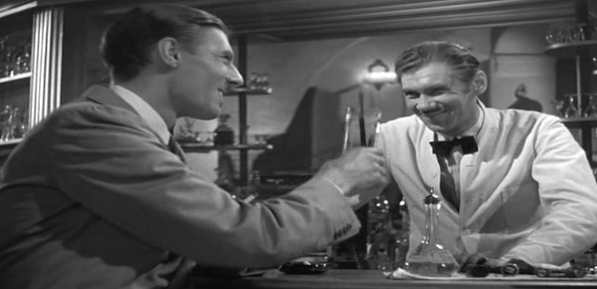
Men are portrayed very stereotypically, as dominant and powerful, they are all seen in professional roles such as police officers, army members and business owners, contrasting to the women in the film who are rarely seen to be working.
Authority figures:
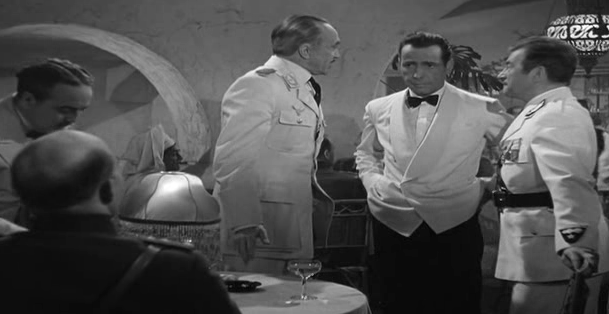
Many of the authority figures appear to be quite corrupt and self absorbed, they are represented as people who do things more for their own gain instead of trying to keep the civilians safe. This is seen when the officers shut down Ricks for “gambling” as it is not allowed yet they are ironically handed their winnings while clearing the nightclub. Their authority is consistently abused without the film, most often by Captain Renalt, who gets to drink for free after curfew, gambling and he uses his power to gain money or sex from vulnerable refugees.
People of colour:
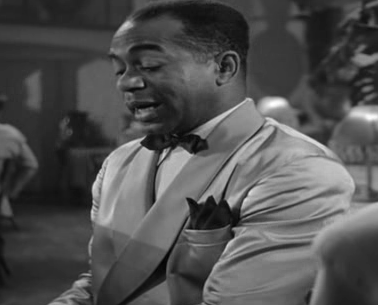
The representation of people of colour is very limited in Casablanca as the only significant character is Sam, who plays the piano at Rick’s, and is a faithful friend to him. This could create the idea that POC are unable to make it to Casablanca or that they are unwelcome there, due to the racism at the time
Americans:
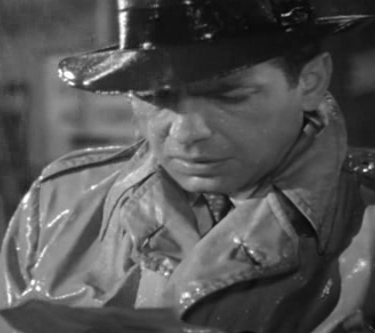
Rick is the most significant American character in the film as he owns “Rick’s Cafe Americain” reflecting his pride for his nationality. The character Rick represents Americans to be passionate, seen through his love affair with Ilsa, as well as being calm and laid-back.
Europeans:
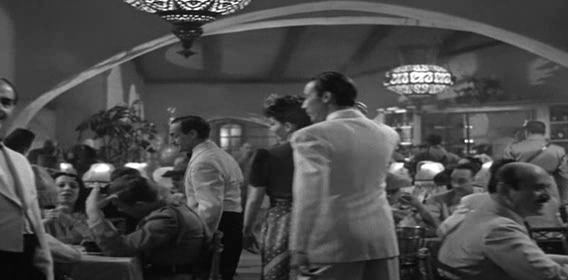
Europeans are represented differently in Casablanca. For example, the Germans and the French are represented to have high authority and seen as powerful and should be feared. Whereas other European characters completely juxtapose this as they are shown as desperate refugees who show unwavering effort to avoid the war and find a safe place to stay.
Historical and Social context
Allies: UK, USA, USSR (Russia)
Axis: Japan, Germany, Italy
France, at the start of WW2 France was an allied power, yet in June 1940 the Germans invaded and succeeded leading France to surrender and become occupies. The Free French however wanted to continue fighting so they still fought for the allies. Vichy France is a territory (around half) it has its own government but is a puppet for the Germans.
Vichy France controls Casablanca, despite being in Morocco it is still controlled by Vichy France.
World War II begins on September 1st 1939. America didn’t join the War until December of 1941 after an unprovoked attack on Pearl Harbour by Japan.
Operation Torch was an allied invasion of the French North Africa that took place on November 8th 1942 it was a compromise that led to victory in North Africa and allowing American armed forces the opportunity to begin fighting against Nazi Germany and Italy.
Casablanca premiered internationally on November 26th 1942 in New York City. It goes on general release in January 1943.
“It captured the Zeitgeist” This means that it captured and defined the spirit/ mood of a particular period of history (in Casablanca’s case WWII) shown by the ideas and beliefs of the time.
Casablanca Conference was from January 14th to January 24th 1943 between British prime minister Winston Churchill and Americas president Franklin D Roosevelt. They wanted to discuss the Allied forces strategy for the next phase of WWII. This has serendipity as this was also when Casablanca was being shown in cinemas.
In the cinema, they had movie reels similar to the news now. Before the main picture you would see a short reel showing the worlds current affairs.
Good though a little brief in places – see Dante’s or Luana’s for the extra detail that research can produce.